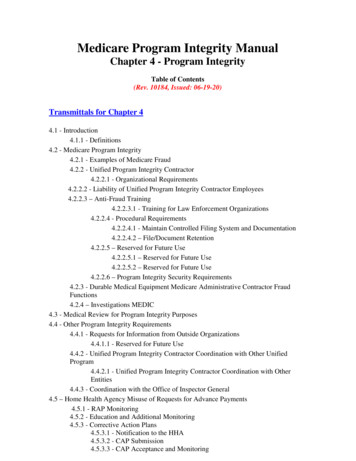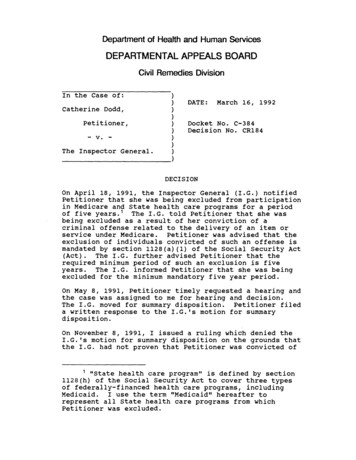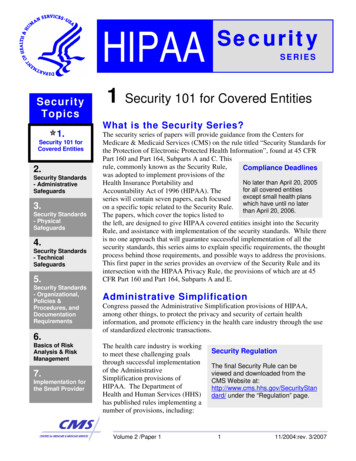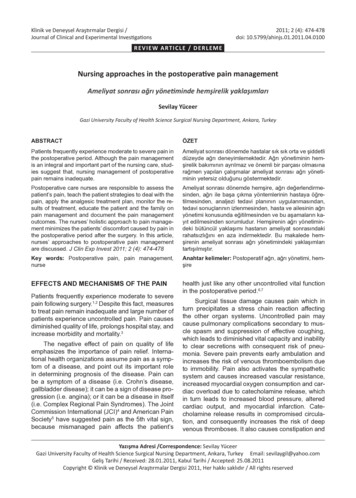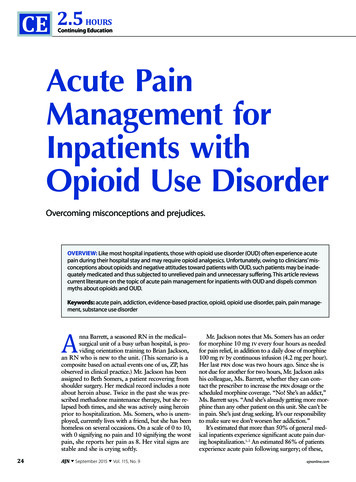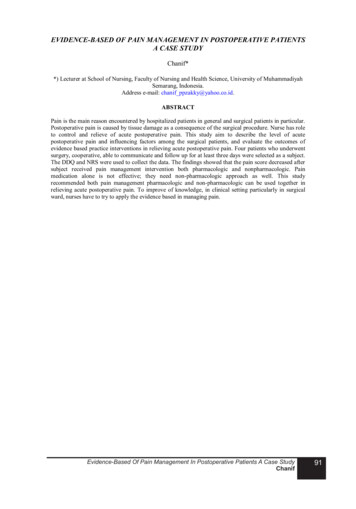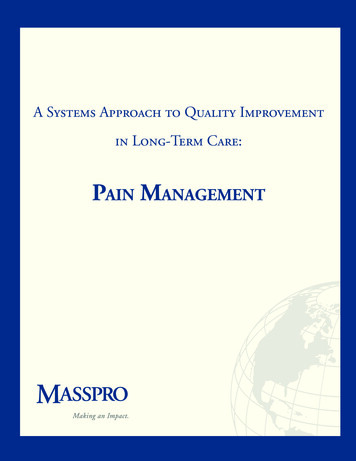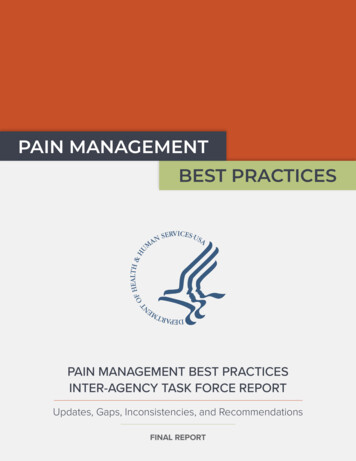
Transcription
EXECUTIVE SUMMARYEXECUTIVE SUMMARYPAIN MANAGEMENTBEST PRACTICESPAIN MANAGEMENT BEST PRACTICESINTER-AGENCY TASK FORCE REPORTUpdates, Gaps, Inconsistencies, and RecommendationsFINAL REPORTPAIN MANAGEMENT BEST PRACTICES INTER-AGENCY TASK FORCE REPORT1
Submitted by the:Pain Management Best Practices Inter-Agency Task ForceReport Date:May 9, 2019Copyright Information:All material appearing in this report is in the public domain and may be reproduced or copied.Suggested Citation:U.S. Department of Health and Human Services (2019, May). Pain Management Best Practices Inter-Agency Task ForceReport: Updates, Gaps, Inconsistencies, and Recommendations. Retrieved from U. S. Department of Health and HumanServices website: eports/index.html2
TABLE OF CONTENTSExecutive Summary. 1Task Force Members. 5Definitions. 91. Introduction. 112. Clinical Best Practices. 172.1 Approaches to Pain Management.192.1.1Acute and Chronic Pain.212.1.2 Perioperative Management of Chronic Pain Patients.232.2 ants.24Antidepressants.24Musculoskeletal Agents.25Antianxiety Medications.25Opioids.252.2.1 Overdose Prevention Education and Naloxone.302.3 Restorative Therapies.31Therapeutic Exercise.31Transcutaneous Electric Nerve Stimulation.32Massage Therapy.32Traction.32Cold and Heat.32Therapeutic Ultrasound.32Bracing.322.4 Interventional Procedures.33Epidural Steroid Injections.34Facet Joint Nerve Block and Denervation Injection.34Cryoneuroablation.34Radiofrequency Ablation.35Peripheral Nerve Injections.35Sympathetic Nerve Blocks.35Neuromodulation.35Intrathecal Medication Pumps.35Vertebral Augmentation.35Trigger Points.35Joint Injections.36Interspinous Process Spacer Devices.36Regenerative/Adult Autologous Stem Cell Therapy.36PAIN MANAGEMENT BEST PRACTICES INTER-AGENCY TASK FORCE REPORTi
TABLE OF CONTENTS2.5 Behavioral Health Approaches.37Behavioral Therapy.38Cognitive Behavioral Therapy.38Acceptance and Commitment Therapy.38Mindfulness-Based Stress Reduction.38Emotional Awareness and Expression Therapy.38Self-regulatory or Psychophysiological Approaches.382.5.1 Access to Psychological Interventions.392.5.2 Patients with Chronic Pain as well as Mental Health and Substance Use Comorbidities.402.6 Complementary and Integrative Health.41Acupuncture.43Massage and Manipulative Therapies.43MBSR.43Yoga.43Tai chi.43Spirituality.442.7 Special Populations.442.7.1Unique Issues Related to Pediatric Pain Management.442.7.2 Older Adults.452.7.3 Patients with Cancer-Related Pain and Patients in Palliative Care.462.7.4 Unique Issues Related to Pain Management in Women.462.7.5 Pregnancy.472.7.6 Chronic Relapsing Pain Conditions.472.7.7 Sickle Cell Disease.482.7.8 Health Disparities in Racial and Ethnic Populations, Including African-Americans, Hispanics/Latinos,American Indians, and Alaska Natives.492.7.9 Military Active Duty, Reserve Service Members, and Veterans.503. Cross-Cutting Clinical and Policy Best Practices. 533.1 Risk Assessment.533.1.1Prescription Drug Monitoring Programs.533.1.2 Screening and Monitoring.553.2 Stigma.563.3 Education.593.3.1 Public Education.593.3.2 Patient Education.603.3.3 Provider Education.
The report emphasizes the development of an effective pain treatment plan after proper evaluation to establish a diagnosis, with measurable outcomes that focus on improvements, including quality of life (QOL), improved functionality, and activities of daily living (ADLs). Achieving excellence in acute and chronic pain care depends on the following:




